Now, guys, in my previous post I briefly mentioned that I had various prototype labs in my homes that I would tinker around with. You know that I have read extensively, and painted. But I never discussed the things that I was prototyping and cobbling together.
And here, I want to enlighten you all on some of them.
Ah. It was a BIG part of my life.
Of course, some of you know that I have been working on the dimensional portal. And, though I never mentioned it, it does need to be known that this was just one of many hundreds of projects that I enjoyed playing around with.
What I never told any of you all was that I actually made a small portal, and at the time of my “retirement”, I was able to send cans of peas and corn to “somewhere”. Wherever they went, they left my world-line template.
That’s for certain.

For illustration only.
My device at my home lab wasn’t so bulky and industrial. Nothing but the frame for the generation of the portal. And my sensors, and the mechanism to modulate the wave-forms. I was working with a company in China for a “real” turbo-charged version. And I made a video about that adventure. Don’t you know.
What I did was made a small 30 degree slope out of plywood, and rolled the 303 size cans down the slope where they entered the portal at the exact moment when the transition coordinates were in flux.
And yeah. It took me a number of tries.
It was a small victory, for certain. Really. I was really proud of myself. And I was literally hopping… seriously, I was hopping up and down in the lab. Were they bouncing off as a ejection of the field, or did they actually go somewhere. I am convinced that they left and went somewhere. Ah. It was my confirmation that I was on the “right track” as I tried to replicate the Majestic dimensional portal.
Of course, my problem at that time and still is… calculating WHERE.
I was able to get them to disappear and go somewhere, by greatly altering the destination coordinates by some initial random manipulations. I was always cautious and conservative; read “timid”. I was far too reserved to try anything really radical.
But one day, I said “fuck it” and just really changed the coordinates in a most radical manner.
It worked. And they went somewhere.
But a measure of what the actual destination was, still eludes me.
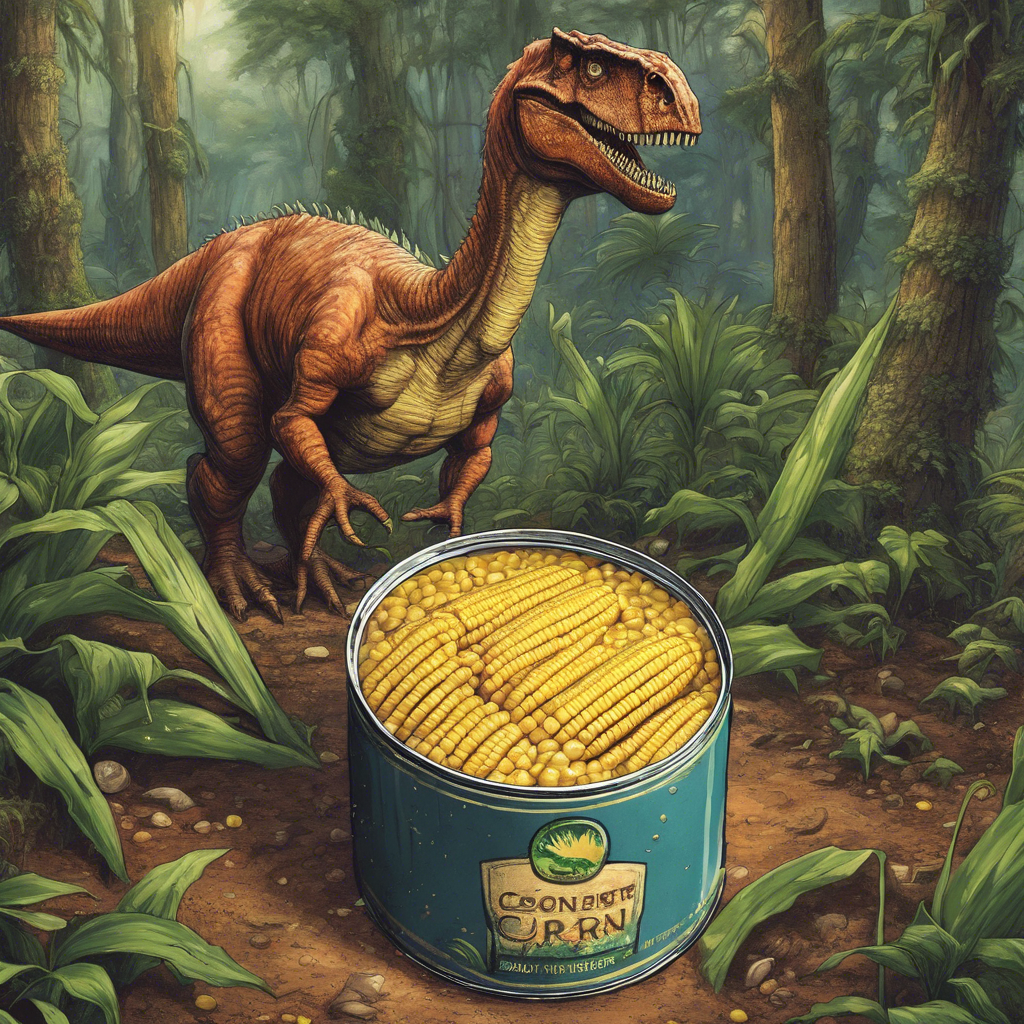
Now, there’s a trick that I had to work out, just to get them to do anything. I had to alter the overlay of the destination coordinates over the egress coordinates in the same phase or rhythm as the powering of the electromagnetic field. Once I was able to do that, well, sure they just left this world line sharply.
I really didn’t NEED to have radically different coordinates. But rather, the secret was in the switching process from egress coordinates to destination coordinates. Not on the coordinates themselves, but how you apply the changing field into the portal.
Hurray! for me.
After hopping up and down, I left the lab. Wrote down the events in great detail (I had very detailed notebooks back in the day). Then, I went and packed for my next trip. (Oh, and my wife was bitching where all the cans of peas, corn and beans were disappearing to…)
Then I went to China on a business trip.
And when I came back, I was arrested and incarcerated, and I have no clue where all my prototyping gear went.
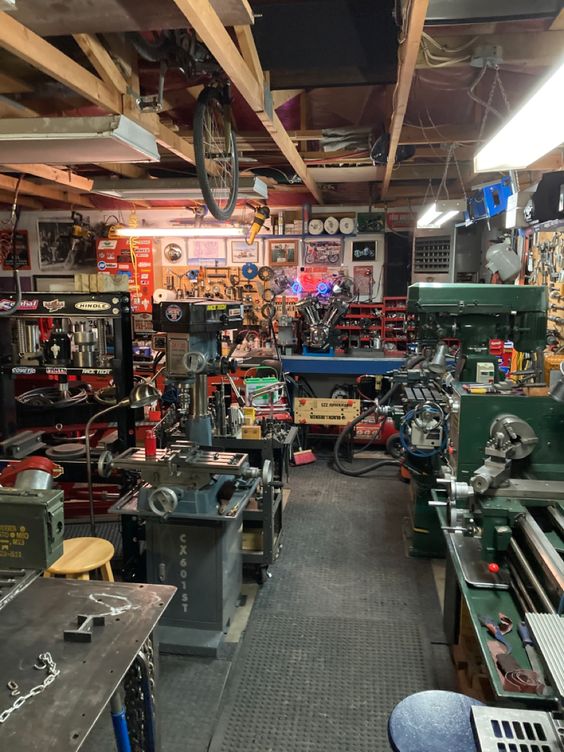
It is unlikely that anyone would have recognized it for what it was. Just a jumble of electronic things on a work bench in the garage. Gosh, though.
I do miss that work bench. It was a old 1940’s steel leg “map table” with a horribly top finish. So I covered it in thick ply plywood. Bolted it down with lag-bolts, and it was as stable as a rock. I’ll tell you what.
Anyways, we can go back to my final dimensional portal experiments prior to the hard stop, and discuss them at a later date.
All by memory of course.
All records, gear, photos and everything else are all missing. Who knows where they are now?
But I had something else.
I was working on duplicating the alien pulse-plasma rifle from the Science Fiction movie “District 9”.
Remember that?
Well… not THAT weapon. That was some kind of blast gun.
I’m talking about the arc gun.
There’s a scene where the arc gun causes BIG ASS explosions. And that was what I was aiming for.
And, well, no it didn’t look like the movie version. What I mean is that I made a functional replica. Not a appearance replica.

I guess I am weird.
What I did, was a kind of work-around, I guess you could call it that.
What I did, was take a taster firing mechanism. That was the wire ejection device, the wire, and the entire battery and trigger mechanism.

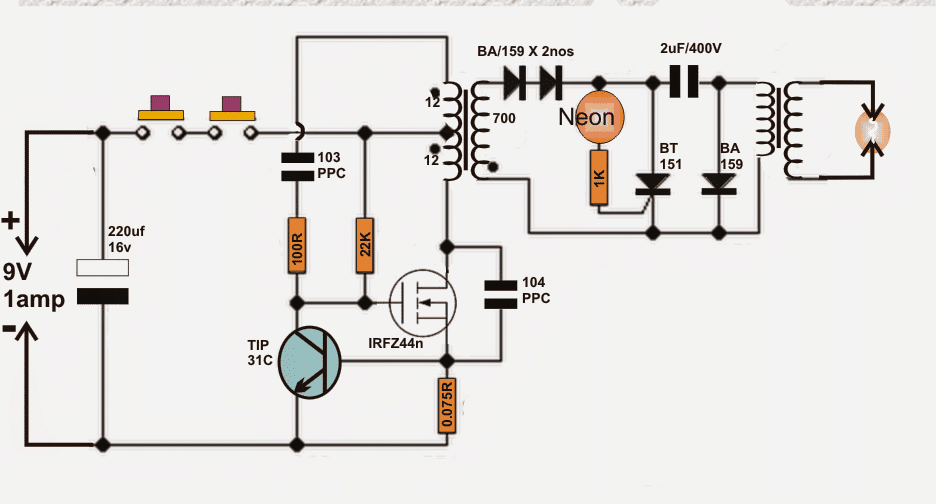

I kept it almost completely intact. But I added a home-made (obviously) thermobaric warhead.

My first warhead had no fuse, and relied on very fine talc powder. Which was really, the a clay mineral composed of hydrated magnesium silicate, with the chemical formula Mg 3Si 4O 10(OH) 2. Talc in powdered form, often combined with corn starch, is used as baby powder. And so, as impure as it was, I used Johnson’s baby powder.
So yes. I made (I suppose) a baby-powder bomb.
In the more advanced designs I used a small bare copper wire that would press against a small PE bag of Hydrogen Peroxide to ignite the warhead when the signal was issued.
Now, this is a small grenade like warhead. Of course, my prototype was ugly as fuck and had a small (out of machined aluminum extrusion sides bolted together that contained my dispersal gas, and ignition powder (yeah, my first go around was with a 22 shell casing minus the lead).
- You fire the gun.
- The projectile goes to the target in a shallow arc.
- It hits the target.
- A “one shot” starts a counter and a nanosecond delay allows the gas to disperse.
- Then the electrical charge zaps through the wires.
- It ignites the .22 casing.
- That then ignites the gas cloud.
- Big, BIG explosion.
To the viewer, it looks like I shot a (faint) lightening bolt that exploded like a big bomb.

And When I tried it out, I will admit that it shocked me. And I did take EVERY precaution. You do NOT NOT NOT mess around with guns. So I was behind a cinder-block retaining wall.
And I still had the top of my hair singed.
Now, the problem with this crude set up was I didn’t have the range. My “warhead” was too heavy. And it needed to be improved. Smaller warhead, and lighter. More powerful ejection device, and longer wire. But all these issues could be worked out.
In fact, my biggest concern at the time was how to make the electrical movement in the wire larger so that it would look like a real bolt of lightening.
But yeah.
This is EXACTLY what I made; Gun B21 @2:40
And here, again, not so dramatic @5:29. But yeah, that’s my project.
Some crazy sciency fiction shit for sure….
All gone.
Yupper boys and girls. Be being such a “danger to the great citizens of the wonderful state of Arkansas” (Heee Haw Hee Haw)… it’s all gone.
Now, only CHINA has access to advanced weapons technology.
Don’t you know.
Oh, not by me. I’m just a quiet unassuming fellow trying to have fun with food, girls, and cats. But I’m not the only Mad Scientist that was pushed out of the pustules and fetid swill that the United States has become.
Yuppur. All gone.
The United States can have bupkis.
I will never forget.

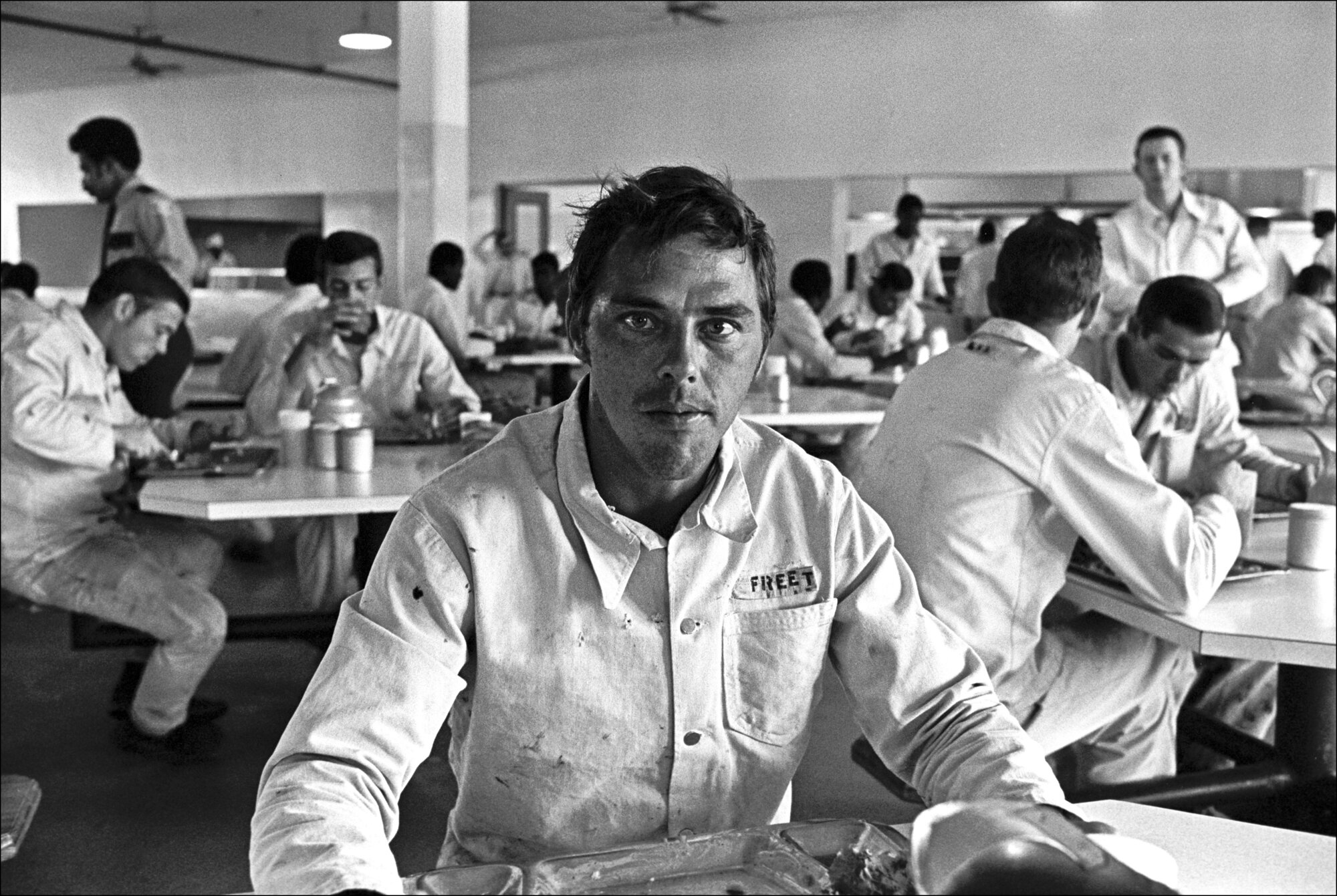

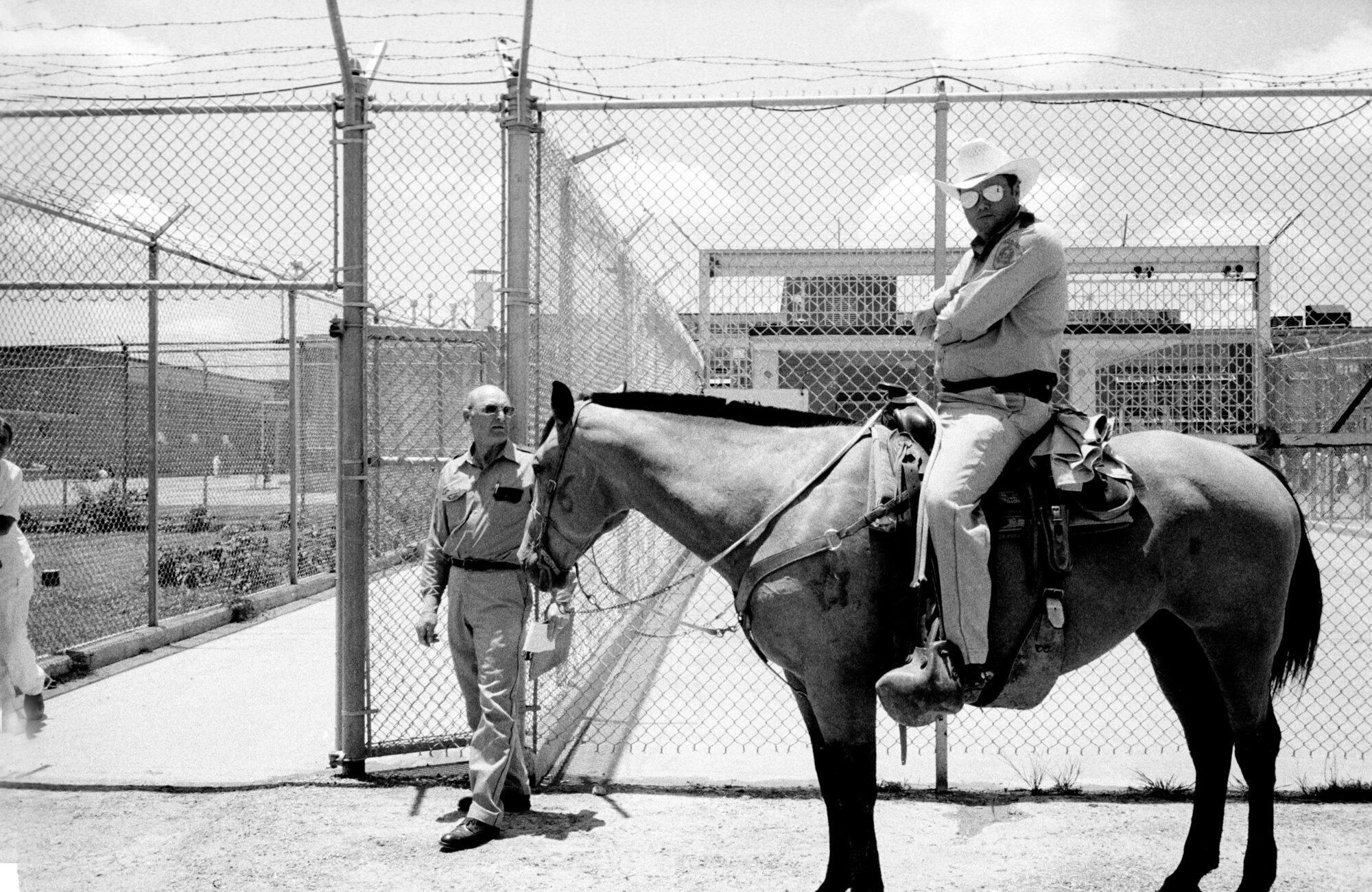





I will never forgive.
Today…
…
‘No proof’ US landed on moon – Ex-Russian space boss
Dmitry Rogozin says that while many in Roscosmos defended Washington’s version of events, no one could produce irrefutable proof
The former head of Russia’s Roscosmos space agency, Dmitry Rogozin, has expressed doubt that the US Apollo 11 mission really landed on the Moon in 1969, saying he has yet to see conclusive proof.
In a post on his Telegram channel on Sunday, Rogozin said he began his personal quest for the truth “about ten years ago” when he was still working in the Russian government, and that he grew skeptical about whether the Americans had actually set foot on the Moon when he compared how exhausted Soviet cosmonauts looked upon returning from their flights, and how seemingly unaffected the Apollo 11 crew was by contrast.
Rogozin said he sent requests for evidence to Roscosmos at the time. All he received in response was a book featuring Soviet Cosmonaut Aleksey Leonov’s account of how he talked to the American astronauts and how they told him they had been on the Moon.
The former official wrote that he continued with his efforts when he was appointed head of Roscosmos in 2018. However, according to Rogozin, no evidence was presented to him. Instead, several unnamed academics angrily criticized him for undermining the “sacred cooperation with NASA,” he claimed.
The former Roscosmos chief also said he had “received an angry phone call from a top-ranking official” who supposedly accused him of complicating international relations.
Rogozin concluded by saying he still cannot believe that the US was able to pull off the feat, but is now unable to, despite the incredible progress in technology since the late 1960s.
What he claims to have found out, however, was that Washington has “its people in [the Russian] establishment.”
Apollo 11 was the first manned mission to the Moon, with Neil Armstrong and Buzz Aldrin going down in history as the first humans to walk on the lunar surface.
The flight was preceded by the unmanned Soviet Luna 2 program, which blazed the trail for Moon exploration.
Last April, President Vladimir Putin pledged to resume Russia’s lunar program.
Grilled Beer Sirloin with Mustard

Ingredients
- 4 large beef sirloin steaks, (about 1/2 pound each)
- 4 tablespoons vegetable oil
- 2 teaspoons mustard
- 2 teaspoons tarragon vinegar
- Salt and pepper
Instructions
- Mix together the oil, mustard and vinegar. Coat the steaks well with the mixture and allow to marinate for about 10 minutes on each side.
- Season with salt and pepper, then grill the steaks for about 2 to 4 minutes on each side.
- Serve with French fries and salad.
The United States is spending SERIOUS money trying to destabilize the ‘Stans.
Kyrgyzstan, Tajikistan, Uzbekistan, Kazakhstan… notice a pattern here?
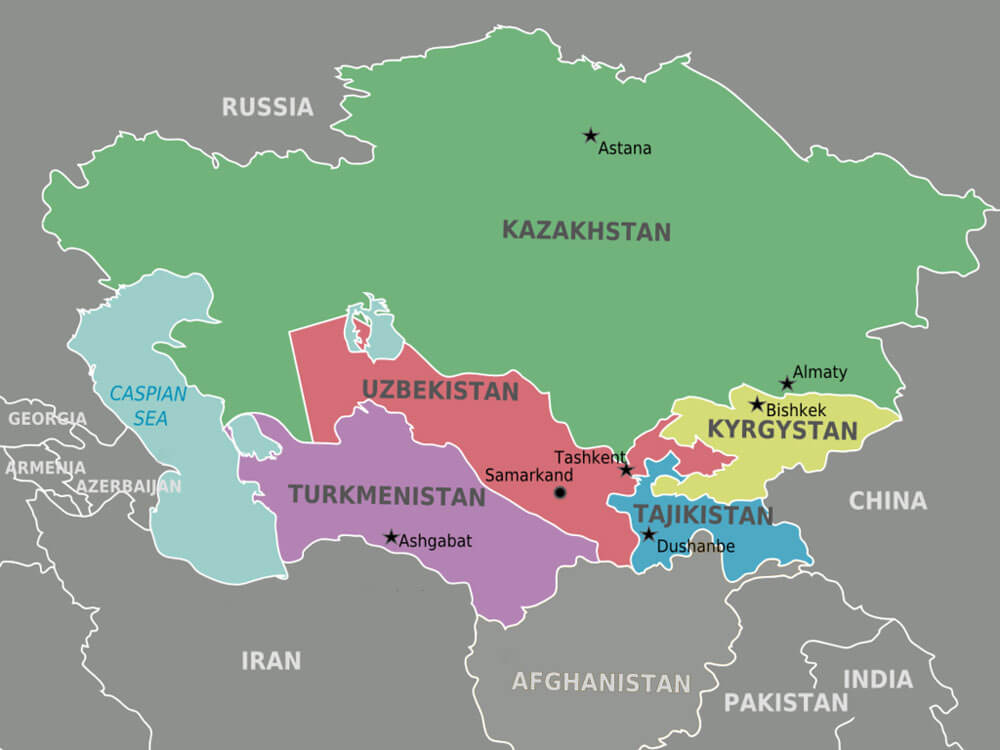
The CIA is spending serious money destabilizing Central Asia and their BRI ambitions to remake Eurasia.
Serious money.
[1] Kyrgyzstan authorities report foiled coup attempt
Kyrgyzstan’s State Committee for National Security says group of extremists planned violent seizure of power
Elena Teslova | 05.07.2024 – Update : 05.07.2024
MOSCOW
Kyrgyzstan’s State Committee for National Security announced on Friday that it had thwarted a coup attempt by a group aiming to seize power violently and destabilize the socio-political situation through mass riots.
The committee’s statement revealed that raids on the suspects’ homes and vehicles uncovered components for improvised explosive devices, firearms, ammunition, walkie-talkies, body armor, law enforcement uniforms, drones, and extremist literature.
Five suspects have been placed in pre-trial detention, and further investigative and operational measures are ongoing.
Detailed information will be provided later, the committee said.
[2] Tajikistan tense amid arrests of senior personalities and former officials and rumours of a failed coup
25 June 2024
Tadjik President Emomamli Rahmon has run Tajikistan with an iron hand since taking power in 1992. There are now reports that he is preparing to hand power to his son. So, news of dissent in the Central Asian Republic is rare. News of a coup and the arrests of many prominent former officials have therefore triggered a lot of speculation. Saidjafar Usmonzoda, a prominent member of the Tajik parliament, was detained on June 14 for allegedly “plotting to overthrow the government.” Prosecutor-General Yusuf Rahmon accused Usmonzoda of collaborating with the foreign-based opposition group National Pact of Tajikistan and of speaking with its leader, the self-exiled Sharofiddin Gadoev. Parliament quickly stripped Usmonzoda of his immunity
His arrest was soon followed by the detention of former Foreign Minister Hamrokhon Zarifi.
But perhaps more prominently has been the detention of the former Chairman of the Supreme Soviet of Tajikistan, Akbarsho Iskandarov. During the wave of conflicts in the early 1990s, he took over as the Chairman of Parliament and served as Tajikistan’s acting president. In recent years, he worked at the Institute of Philosophy, Political Science, and Law of the Academy of Sciences. Prior to this, for many years, he served as Ambassador Extraordinary and Plenipotentiary of Tajikistan to Turkmenistan, Kazakhstan, and Mongolia.
The General Prosecutor’s Office summoned Akbarsho Iskandarov for questioning on June 13 and 14, following which they did not release him. The reason he was interviewed and the grounds on which he has been detained are unknown.
“Investigators of the General Prosecutor’s Office questioned about 50 people during these days and released them on their recognisance, while Akbarsho Iskandarov was not released,” a source stated.
As is often the case in authoritarian countries dissent often bubbles under the surface. The Tajik authorities have not been very forthcoming with information about what is going on, but the developments come on top of an already tense time for the Tadjik leadership as it tries to deal with the fallout from the involvement of Tadjiks in the recent terrorist attacks in Moscow. His leadership has embarked on a number of measures, which some consider knee-jerk, such as banning the hijab.
All in all, Tajikistan’s problems seem to be piling on top of each other, and as Central Asia’s poorest country, it is vulnerable to sudden shock. Other Central Asian leaders look at the situation in Tajikistan with concern, not least because of the risk of falling out into their own quite fragile political processes.
[3] Uzbekistan imposes regional state of emergency after deadly unrest
Government U-turns over plans to curtail autonomy of Karakalpakstan but fears rise tensions may escalate
Reuters in Almaty
Mon 4 Jul 2022 09.47 BST
Eighteen people were killed and 243 wounded during unrest in Uzbekistan’s autonomous province of Karakalpakstan over plans to curtail its autonomy, Uzbek authorities said.
Security forces detained 516 people while dispersing protesters on Friday but have released many of them, the national guard press office told a briefing.
On Saturday, President Shavkat Mirziyoyev dropped plans to amend articles of the constitution concerning Karakalpakstan’s autonomy and its right to secede. He also declared a month-long state of emergency in the north-western province.
According to official reports, protesters marched through the provincial capital of Nukus last Friday and tried to seize local government buildings.
Photographs from Nukus, published on Sunday by the news website O‘zbekiston va jahon yangiliklari, eng so‘nggi tezkor xabarlar, qiziqarli maqola, intervyu, foto va video materiallar, showed street barricades, burnt out trucks and a heavy military presence including armoured personnel carriers.
Videos shared on social media showed at least two severely wounded people being carried away by their arms and legs. One was bleeding from the abdomen, while the other was screaming.
Another showed a young man crouching by an apparently lifeless body in the street, screaming “a man is dying”, and running for cover as shots rang out.
An exiled opposition politician, Pulat Ahunov, told Reuters over the weekend that people were unable to move around or obtain more information because of a state of emergency imposed by the authorities.
Uzbekistan is a tightly controlled former Soviet republic where the government clamps down hard on any form of dissent. It was the second outbreak of unrest in central Asia this year, after Kazakhstan crushed mass protests in January and Russia and other former Soviet republics sent in troops to help restore order.
The protests in Uzbekistan were prompted by planned constitutional changes that would have stripped Karakalpakstan of its autonomous status. In a U-turn, the president dropped those plans on Saturday.
Ahunov, the chair of the opposition Berlik party, told Reuters from Sweden that he condemned the use of lethal force. “The authorities, from the start, should have opted for dialogue and negotiations,” he said. He said he feared the potential for the situation to escalate into an ethnic conflict between Uzbeks and Karakalpaks, a minority group with their own language.
Authorities had called a public meeting for Tuesday to discuss the situation, he added.
Kazakhstan said it was concerned by the events in Uzbekistan and welcomed moves by the authorities to stabilise the situation.
Steve Swerdlow, associate professor of human rights at the University of Southern California and an expert on the region, said Uzbekistan should engage as transparently as possible in declaring casualties and the use of force and over the longer term look at what concerns were at the heart of the protests.
[4] President of Kazakhstan says he has weathered attempted coup d’etat
By Reuters
January 11, 20229:44 AM GMT+8
NUR-SULTAN, Jan 10 (Reuters) – Kazakh President Kassym-Jomart Tokayev said on Monday that his country had weathered an attempted coup d’etat coordinated by what he called “a single centre” after the most violent unrest since the Soviet collapse.
In a speech to an online meeting of the Russian-led CSTO military alliance by video link, Tokayev said that order had now been restored in Kazakhstan, but that the hunt for “terrorists” was ongoing.
“Under the guise of spontaneous protests, a wave of unrest broke out… It became clear that the main goal was to undermine the constitutional order and to seize power. We are talking about an attempted coup d’etat,” he said.
Demonstrations against a fuel price rise began just over a week ago before erupting into a wider protest against Tokayev’s government and the man he replaced as president, 81-year-old Nursultan Nazarbayev.
Kazakh President Kassym-Jomart Tokayev speaks during a televised address to the nation following the protests triggered by fuel price increase in Nur-Sultan, Kazakhstan January 7, 2022. Official website of the President of Kazakhstan/Handout via REUTERS
“The main blow was directed against (the city of) Almaty. The fall of this city would have paved the way for a takeover of the densely populated south and then the whole country,” he said. “Then they planned to seize the capital.”
Tokayev said that a large-scale “counter-terrorism” operation would soon end along with a CSTO mission that he said numbered 2,030 troops and 250 pieces of military hardware.
Tokayev defended his decision to invite Russian-led troops into the country and said that doubts over the legitimacy of that mission stemmed from a lack of information.
Kazakhstan would soon provide proof to the international community about what had happened, he said.Sixteen members of the security forces were killed, while the number of civilian casualties is still being checked, he said.
Reporting by Tamara Vaal in Nur-Sultan; Writing by Tom Balmforth; Editing by Andrew Osborn
Why should China tolerate the US fascists & warmongers sending drones to criminal separatists in Chinese Taiwan? Will these traitors turn Taiwan into the next Ukraine and a disposable US pawn? How can this US proxy war on China be prevented?
Taiwan will not become Ukraine. China wont let it happen.
USA is using Taiwan as a cash cow to buy all US weapons. That is all. No harm done to China as a whole. It only hurts Taiwanese taxpayers’ money but not China.
China knows USA’s goal is to provoke China to start a war. Like Ukraine provoking Russia.
In the big picture, a war will hurt the economy of the entire world. Not just China.
Not to mention human life.
So China keeps a cool head. Stay calm & not to react to US deliberate malice. Not to fall into the US trap.
But China has closing up on Taiwan these days.
First. no more so-called Taiwanese sovereign territory. All are Chinese. Chinese coastguards & warplanes are moving closer & closer to Taiwan coastline & airspace.
2nd, China is to pass a law to put on trial stubborn Taiwanese separatists without their appearance in court. Max death sentence. Extradition too.
The law can apply to foreigners who help stubborn Taiwanese separatists.
USA & the West in general is quiet on the upcoming Chinese law so far. Because they have similar laws to deal with their separatists too
Just wait & see. Dont worry.
Pepe Escobar: Putin’s BOMBSHELL just Changed Everything and NATO is Done
Finding love in space
Submitted into Contest #8 in response to: Write a story about an adventure in space. … view prompt
Tea Kleva
I smiled and thanked him. He took my hand and gave it a little kiss. We walked to one free table and sat down.
“Let me introduce myself, I’m Hunter, I’m 166 years old and I live in a villa on Mars. I appreciate the natural beauty, so that’s the main reason I chose you as my date.” He said.
“Well thank you for the compliment, Hunter. I’m Jasmine, I’m 133 years old and I live in a small apartment on Venus. I appreciate that you are such a gentleman and that’s the reason I let you choose me as your date.” I said.
We were flirting the whole time and I could feel some kind of connection between us, but at the same time I just couldn’t stop thinking about Caroline and every time I saw her having a good time with her date I was kind of jealous.
The day on Jupiter ended and I felt like there was no connection between me and Hunter. He was the perfect guy, just not for me. I walked in space ship and sat beside Caroline.
“How was your date?” I asked.
“It wasn’t bad, but at the same time I felt I had more connection with you than him, you know.” She said.
I was so happy, because I felt exactly the same. Does that mean that I should search for my soulmate on my own planet? I’m so confused.
“Can I ask you something?” I said. “Would you like to go out with me? To know each other better and become maybe, uh, more than friends…”
I couldn’t believe I actually said that. I was a little scared of how she is going to react. So I was just starring at my feet. She took my chin with her soft, warm, perfect hands and lifted my head so we made eye contact. She was smiling so that’s a good sign.
“I would love to go out with you Jasmine, because I feel something for you. It’s a little strange, but an amazing feeling.” She said while still holding my face.
During our flight back we hit another spaceship. The alarm went off and I was panicking. Caroline took my hand and told me everything is going to be okay. We landed on the Moon and Caroline had the idea that we could go on an adventure, so she took my hand and we ran on the other side of the Moon. We found a cave and we went inside. It was dark, but fortunately I had my battery with me. The cave was white, the walls had different shapes and the echo was amazing. We started singing and the walls sang back. I never wanted to leave this place. We went deeper in the cave and found a waterfall. I remembered that we learned a lot of this cave in the school. The water was magical. If you dive in it and think of some place, you would get there through this waterfall. I was so curious if this really worked, so I proposed to Caroline that we dive in the water and travel on the Earth.
We got in the water and thought of some place on Earth. Suddenly I remembered that Eart was a big place and that we wouldn’t land in the same place, but it was to late. There was a flash of light so I closed my eyes and I could feel my body flying through the space. I landed in front of Big Ben. I was in London. I didn’t have any device to communicate with Caroline and even if I was among the people, I felt alone.
Right now I just wanted to find Caroline and go back to Venus, where I could perhaps marry her and be with her forever. I know that we didn’t know each other enough, but my gut is telling me that she could be the one.
I just stopped for a minute and closed my eyes. I wanted to see if I could feel where she was. I heard music in the distance and someone was calling my name. I turned around and opened my eyes. Some kind of shadow ran into the bar where the music came from. I followed the shadow and I saw a girl who had same hair as Caroline. That must be her! I found her! I went to the girl and hugged her.
“I finally found you!” I said. I let go of the hug and the girl turned around. It wasn’t Caroline. I felt so embarrassed and I left the bar. I started crying because I thought I would never find Caroline. I sat on the stairs outside the bar and I couldn’t stop crying. After I stopped crying I looked on the floor and my tears spelled Paris. I stood up and went to the airport. I had some money with me so I bought a ticket for Paris.
I searched whole Paris just to find Caroline, but I couldn’t find her. I stopped in front of Eiffel tower and started praying that someone could give me a sign or some kind of help, so I could find her.
“Hello miss, do you want to see how beautiful Paris is from the top of Eiffel tower?” some man said.
I bought a ticket to visit the top of the tower. I stopped for a moment to enjoy the view, when someone grabbed my shoulders. I turned around and there she was, Caroline. We found each other, fate wanted to reunite us in the city of love, Paris. We hugged and I just couldn’t let her go. I didn’t want to lose her again.
“Now that we found each other again, we should go home.” She whispered in my ear.
“But home is wherever we are together. So right now we could stay in Paris and then we could explore the rest of the World.” I said with a tear sliding down my cheek.
So we decided to stay on Earth. The only thing we needed at the moment were each other and the desire for travelling.
After 5 years we travelled the whole world, so we decided to go back on Venus. Me and Caroline live in the house we build together. We love each other and want to grow old together.
Sometimes your soulmate come to your life when you least expect it and sometimes it’s not the person you would expect, but that’s the beauty of life, it’s unpredictable.
Shorpy








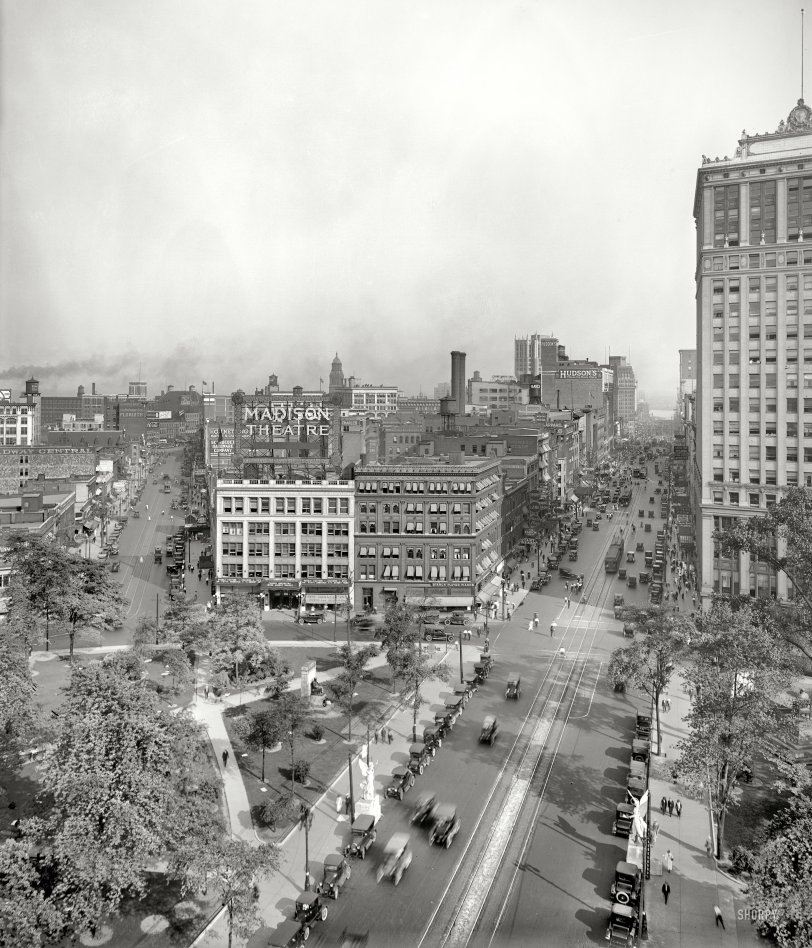









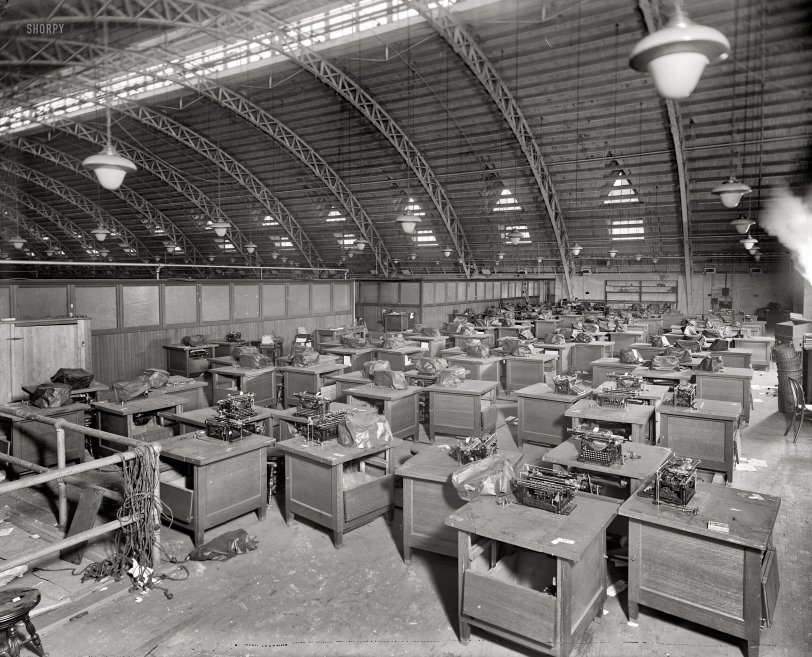







On Tuesday, China and the Philippines held a bilateral meeting to ease tensions in the South China Sea. Do you think if those de-escalation efforts would work?
PH is a US puppet. It is USA who controls the movement of puppet PH.
If ever the China-PH meeting works, it will be USA who wants to ease the tension in SCS.
Does USA want to ease SCS tension? Let us look for signs.
Few things took place since the US installation of mid-range missiles in PH on 2024/4/11. ie USA wanted to escalate tension on 4/11.
1, On the same day, both China & Russia react & mentioned Cuba. Hinting that they could do something in Cuba.
Actually, they also can do it in all Latin American countries that are hostile to USA. You USA create tension at our front door, we Russia+China will create tension at your front door too.
2, Cuban defense chief right away visited China. I heard he visited Russia too.
3, Later Russia sent 4 warships to visit Cuba with open welcome by Cuba.
4, On 6/14 or so, Pentagon disclosed it launched an anti-Chinese-vaccine campaign to kill Filipinos. (I still cannot figure out why USA disclosed this at the time when we already forget about covid. There is a reason but we dont know why yet.)
5, On 6/17, PH soldiers were defeated by Chinese coastguards at Ren’ai shoal.
At first, PH was vicious. Later, under US instruction, PH tuned it down to misunderstanding or accident.
PH threatened to invoke the US-PH Mutual Defense Treaty. Thru 2 scholars in Cambridge U, USA told PH that MDT does not apply to SCSea.
6, On 6/28, USA announced it will withdraw US troops from Luchu (Okinawa) & Japan mainland to Guam, starting Dec 2024. Hollowing the US power in the 1st island chain.
7, On 6/29, USA dropped a sub detector to SCS. Got caught by China. There was a 2-day China-US electronic battle in SCSea. USA lost & left,
8, Chinese destroyers & later an aircraft carrier sailed near US military bases in PH. To “declare” victory.
9, On 7/4, USA said it will remove its mid-range missiles in PH in Sept. … a further indicator that USA has lost to China.
Duterte clearly is smarter than Marcos. He openly said that when PH has 1 missile pointing at China, China will also point a missile at PH. (I add) China will not point 1 at PH but 100 missiles. USA cannot out-perform the Chinese speed in manufacturing. If USA can match, USA wont move to Guam.
Back to the question. There are signs that USA wants to de-escalate SCS tension, for now. Perhaps until after they find a Biden replacement for the US election.
NASA Finally Unveiled ‘Quiet’ X-59 Supersonic Aircraft
Cool, and interesting.
Chinese battery expansions
China’s progress with renewable energies is undeniable, but the ethics with which they are achieving it is not. The whole world is on tenterhooks with the battery they are hiding from the rest of the world. The reason? It has enormous potential to destroy our industry and export capacity with the strangest material we have ever seen.
China created this battery that leaves lithium behind but has it hidden in its industry
China has recently made major advancements in sodium-ion battery technology as an alternative to the more common lithium-ion batteries. Sodium-ion batteries utilize sodium ions rather than lithium ions to store and release energy.
While lithium-ion batteries currently dominate the global battery market, especially for electric vehicles and consumer electronics, sodium-ion batteries have some potential advantages that have piqued China’s interest.
China sees sodium-ion as a strategic opportunity to establish domestic technology leadership and reduce reliance on imported lithium. With its vast sodium reserves, China could secure its supply chain for battery materials rather than depend on sourcing lithium from other countries.
This has led major Chinese companies to accelerate sodium-ion research and development. Over the past few years, China has rapidly expanded sodium-ion battery production capacity and implemented large-scale deployments of the technology.
Sodium-ion Chinese batteries, a milestone in energy history
Sodium-ion batteries are very similar in design to the lithium-ion batteries that currently dominate the battery market. Both use intercalation chemistry, meaning that ions move between the cathode and anode to provide power.
However, sodium-ion batteries use sodium ions instead of lithium. This provides some key advantages. The cathode in a sodium-ion battery is typically made from layered transition metal oxides, while the anode uses hard carbon, similar to lithium-ion batteries.
During discharge, the sodium ions flow from the anode to the cathode through the electrolyte. When charging, the ions flow back to the anode. Unlike lithium, sodium is cheap and abundant. Sodium does not need special handling or storage. This makes sodium-ion batteries easier and cheaper to produce.
However, sodium ions are larger and heavier than lithium, which impacts energy density. But improvements in materials and design are helping boost the energy density of sodium-ion batteries.
A problem for the United States: Tesla and the American industry are threatened.
Chinese automaker BYD has built the world’s first mass-production facility for sodium-ion batteries in Chongqing. The factory has a planned annual capacity of 20GWh and will start producing batteries in 2025.
BYD’s sodium-ion batteries will use a new battery chemistry developed in-house. The company claims its batteries have a range comparable to lithium-ion batteries but with advantages such as faster charging times and higher energy density.
The new factory represents a major investment by BYD in sodium-ion technology. The company sees great potential for sodium-ion batteries due to the abundance and lower cost of sodium compared to lithium.
BYD plans to initially use the sodium-ion batteries produced at this factory in its electric buses. Over time, the company may expand the use of sodium-ion batteries into its electric cars and other applications.
The opening of this large-scale sodium-ion battery factory highlights China’s ambitions to lead in next-generation battery technologies. With strong government support, Chinese companies like BYD aim to leapfrog established lithium-ion batteries.
As you can see, the Chinese batteries have taken a step that we would not have liked to see, given the relevance it will have for our industry. The problem? It is not a shared innovation, but an invention that remains hidden from the rest of the world. There is still a long way to go to see if they decide to extend them to the rest of the planet and replace lithium forever.
BRICS on the Rise, Countries Ditching the Dollar & U.S. Empire Declines w/ Prof. Richard Wolff
Huawei has a chip problem, but it’s far from being a write-off
Recent press reports have proclaimed Huawei both a resurgent force and a victim of US sanctions. The reality is more complicated.
Iain Morris, International Editor
July 3, 2024
For lovers of melodrama, the annual updates by Huawei’s carousel of rotating bosses are often a treat. Hit by US sanctions under former US President Donald Trump, the Chinese company once depicted itself as a fighter plane pockmarked by gunfire, struggling to stay airborne. This year’s update was disappointingly low-key. “We’ve been through a lot over the last few years,” said Ken Hu without fanfare, after rotating into the hot seat. But press reports have compensated in wildly diverging ways.
“America’s assassination attempt on Huawei is backfiring,” blared The Economist in a detailed briefing on June 13. The message was that a sanctions program started by Trump and accelerated under President Joe Biden has largely failed. Huawei has not only avoided a crash landing but also gained altitude and become more self-reliant.
Two weeks later, Quartz weighed in with its own, much shorter assessment. “US sanctions against China’s AI chip efforts seem to be working,” ran the headline, with a standfirst saying: “Huawei is reportedly having a hard time increasing production of its Ascend 910B AI chip.” American policymakers have denied China the cutting-edge tools it needs to produce the most advanced chips. The older equipment available to Huawei just isn’t fit for purpose.
The reality is far more nuanced than either of these stories suggests. But to judge the success or failure of US policy, one must first ask what the sanctions were supposed to achieve. They were introduced long before companies and governments became fixated on generative AI, when the in-vogue technology – believe it or not – was 5G.
Given the share prices of 5G stakeholders at the time, markets never expected the next-generation mobile technology to be a money spinner. But governments were fooled into thinking it would connect everything from insulin drips to ballistic missiles and power economic growth. Amid signs of Chinese government assertiveness, letting a Chinese company anywhere near western 5G networks would surely be insane.
Pincer movement
The campaign against Huawei was therefore two-pronged. The first meant exerting pressure on US allies and friendly countries in Europe to flush Huawei out of their networks. Many had grown reliant on Huawei in the 4G era, seeing it as a low-cost but technologically sophisticated alternative to the likes of Alcatel-Lucent, Ericsson and Nokia Siemens Networks. For technological and economic reasons, telcos were likely to stick with the same vendors when upgrading to 5G. And by the time it came along, Huawei was widely perceived to have the technological edge over Western rivals.
But this part of the campaign has had mixed fortunes. Germany, Europe’s biggest economy, has spent years prevaricating while its telcos have built nationwide 5G networks with Huawei kit. Even the UK under Conservative Prime Minister Boris Johnson, a supposed Trump ally, wanted a compromise whereby Huawei would be ejected from the core, the cockpit of the system, but allowed to remain sprawled throughout the vast seating area of the radio access network (RAN).
The other prong of the US campaign, then, was designed to gum up Huawei’s supply chains and stop it from producing the trustworthy, competitive equipment that UK and other telcos might want to use in their networks. And the US had an ace up its sleeve: its domination of chip design and chipmaking tools, including the machines used by Asian foundries to produce the most advanced components. The hammer blow came when sanctions denied Huawei access to TSMC, a Taiwanese foundry using Dutch and US machines to crank out the smallest transistors in the world.
This tightening of rules ultimately persuaded UK authorities to ban Huawei from selling 5G products, while giving telcos until the end of 2027 to sanitize their networks. Its bigger impact, though, was on Huawei’s smartphone business, never identified by US hawks as a potential conduit for Chinese military “backdoors” and subterfuge, as networks had been. Unable to Windsor has interpreted that as an admission the current yields are not commercially viable in the long run. “Yields need to be 90% or better in most processes to earn a positive return on the capital invested to build and operate the fab,” he said in a blog. “By all accounts, SMIC and Huawei’s yields are way below this figure which is why the current situation for making 7-nanometer chips in China is unsustainable.”procure the tiny chips needed for its consumer devices, and barred from Google’s suite of software apps, Huawei suffered a smartphone collapse. Honor, a key brand, was sold to state-backed acquirers.
When DUV may do
But this business group, formerly responsible for more than half of Huawei’s revenues, staged a dazzling recovery last year – to the alarm of US hawks. New and popular gadgets appear to include 7-nanometer chips, thought to be off limits to Huawei. To produce them, it was believed, a chipmaker would need extreme ultraviolet lithography (EUV) machines. ASML, a Dutch company, has a monopoly on their production, and its government has denied it an export license to serve China.
Experts believe SMIC, a Chinese foundry, has instead resorted to older deep ultraviolet lithography (DUV) machines to churn out 7-nanometer chips for Huawei. While not as good as EUV, DUV can employ a technique called multiple patterning to do it. The problem with multiple patterning is that yields – a percentage measure of the functional chips derived from a wafer – tend to be relatively poor. This could partly explain why SMIC’s profitability suffered so badly during its recent first quarter. After a 31% year-over-year rise in cost of sales, to $1.5 billion, SMIC’s gross margin shrank from 21% to less than 14%.
Huawei, moreover, now appears to have acknowledged its chip problems for the first time. Richard Windsor, the founder of analyst firm Radio Free Mobile, last month drew attention to a keynote address by Zhang Ping’an, a Huawei executive, at the 2024 China Mobile Computing Power Network Event. In it, Ping’an appears to have recognized that US sanctions have put 3-nanometer and even 5-nanometer technology beyond Huawei’s reach. Solving the 7-nanometer problem needs to be the company focus, he apparently said.
Signs of strength
But there is no sign that Huawei, unlike SMIC, has borne any costs so far. Its cost of sales last year rose just 5%, to about 325 billion Chinese yuan (US$44.7 billion), while revenues were up nearly a tenth, to about RMB704.2 billion ($96.9 billion). At the smartphone-making consumer business, sales grew 17%, to roughly RMB251.5 billion ($34.6 billion).
Huawei’s rebound in the smartphone league tables shows consumers care little if there is a 7-nanometer or 5-nanometer chip in the phone (although battery life and performance might be concerns). If Huawei can fix the problem of yields – and Windsor does not put it past the Chinese – it may not have to worry.
Huawei also has less need for tiny chips at its networks business, the part that bothers policymakers. This is partly because there are far fewer 5G basestations in the world than there are 5G smartphones. Basestations are also much bigger than smartphones and therefore not as space constrained. The semiconductors they incorporate have always tended to be a generation or two behind the chips inside smartphones.
Regardless, chip sanctions have not stopped German and various other European telcos from investing in Huawei kit. The 5G networks now deployed in China, where Huawei is the dominant vendor, are regarded as some of the best in the world. In its latest mobility report, published last month, Ericsson notes that midband 5G equipment – the sort needed for higher levels of performance – now covers about 95% of China. In Europe, the figure is just 30%.
If the US campaign has achieved anything on the networks side, it is a bifurcation of the global market along geopolitical fault lines. China and its friends buy Chinese gear while the rest of the world buys from Nordic or other Asian vendors. But nobody is buying much. Enthusiasm for 5G has waned, and spending on the RAN is expected by Omdia, a Light Reading sister company, to fall by 7% to 9% this year after dropping 11% in 2023.
In this bear market, Huawei is doing considerably better than either Ericsson or Nokia, its main rivals. One reason is that China remains by far the world’s biggest 5G market and a dependable source of revenues for Huawei. Sales to Chinese customers were up 17% last year. And while this growth was undoubtedly fueled by consumer purchases of Huawei’s latest smartphones, China also accounted for more than two thirds of total company sales, up from 52% back in 2018. By contrast, Ericsson’s sales to North America, its most profitable market, tumbled 38%.
The fear of Ericsson boss Börje Ekholm is that the West will fall behind China in this bifurcated market. “If the tech world is fragmented east and west then it is going to mean competition between two ecosystems,” he told Light Reading during an interview in August 2021. “A Chinese ecosystem will be formidable competition for the west. It concerns me that end users – customers and enterprises – will feel it in their mobile experience.”
Branching out
But Huawei’s successes last year owe something to a reinvention forced on it by US sanctions. Unlike Ericsson or Nokia, it has expanded into domestic markets outside its traditional kit-making sector, buoyed by Chinese protectionism and antipathy toward the standard American alternatives. Sales at its cloud computing business, for example, rose 22% last year, to about RMB55.3 billion ($7.6 billion). As small as that makes it next to the industry giants, Huawei is slowly gaining ground.
“Huawei has been doing quite well in its local market and has been growing much more rapidly than the two market leaders, Alibaba and Tencent,” said John Dinsdale, the chief analyst and managing director of Synergy Research, in a previous email to Light Reading. “Its market share in China is now into double figures (just!). It does, however, remain a long way behind the leaders.”
No doubt, the recent AI expansion could prove difficult if sanctions thwart Huawei’s attempts to produce more advanced chips. Yet if the AI story turns out to be solely about chips, rather than the services they are intended to support, Nvidia is heading for an almighty crash. Amazon, Google, Microsoft and various other US tech giants all have AI pitches that are not just to do with silicon. There may be a bigger future opportunity for Huawei in software – in large language models, applications or even artificial general intelligence.
The US sanctions program clearly has numerous flaws. Its first is the assumption that a lead in silicon design somehow translates into a pervasive tech hegemony. From the perspective of US hawks, the second must be the poor enforcement of new rules, with companies like Intel and Qualcomm awarded exemptions that allowed them to keep serving Huawei. On the opposite side, others argue that cutting US companies off from the vast Chinese market is counterproductive. Weakened by lower revenues, they will have less to invest in US research and development.
Worst of all, though, is the old-fashioned view, almost redolent of Western imperialism, that sanctions will permanently hobble China – that homegrown EUV and other such chip wizardry is somehow beyond the capabilities of China’s scientists and always will be. There was similar talk more than 20 years ago when Huawei was routinely dismissed as a copycat, a rip-off merchant and plunderer of US intellectual property. By 2019, technology executives within European telcos reckoned it was the 5G company to beat.
Not everyone outside China subscribes to such views. Ericsson’s Ekholm seems to be among them, fretting in 2021 about the West’s ability to “keep up with the vast R&D spend in Asia – particularly China – that’s already happening.” The year before, analysts at New Street Research wrote that China’s vast resources of human capital would ultimately give it a decisive long-term advantage.
Earl Lum, a semiconductor expert at EJL Wireless Research, has described it in succinct terms. “There are so many people in China to hire,” he previously told Light Reading. “It doesn’t matter that everyone you are hiring isn’t an Einstein. One of them will be.”
This cat was called ‘mean.’ Then he met my husband.
Have you ever walked into a room and seen something that made you go, “Nope,” and turn 180 degrees and walk away? What was it?
A year ago, I was shopping with my two daughters and sister in Goodwill. I usually let the girls (9 and 12 at the time) roam the toy aisle while I am looking at trinkets and today was the same. I was browsing one of the isles with my sister when all the sudden I saw her freeze, look behind me and say, “No. No no no no. Get the girls, NOW.”
I immediately headed to the aisle where my youngest daughter was, and my sister went to get my oldest daughter. When I got to the aisle, there were two men standing on either side of my daughter, pretending to look at things on the shelves. I grabbed her and headed to the front door where my sister and oldest daughter met us. We went to our car, locked the doors and waited for a minute. Then we watched the two men that had been in the aisle and two more men walk out of Goodwill having purchased nothing.
I am almost positive that day’s outcome would have been very different if my sister had not had the sense that something was very wrong.
Why successful men use escorts: what the rich and the beautiful have in common
What facts about Canada do people not believe until they come to Canada?
There are many misconceptions about Canada. Looking at the country on the map is one thing, but being there is another.
- First, Canada’s size becomes apparent once a visitor drives (or takes a bus) between Vancouver and Calgary, or Toronto and Thunder Bay. Great Britain, which includes Scotland and Wales, could fit inside Canada about forty times.
- Canadian summers are hot, particularly in southern Ontario around Toronto and in Montreal, Quebec. The humidity levels in July and August can push temperatures up to between 35°C and 40°C. In the far north in the Yukon and Northwest Territories, summers aren’t blazing hot but you can walk around with t-shirts and shorts. Temperatures hover around 20°C and the sun doesn’t set until the winter.
- There are lakes, lots of them. The number of lakes larger than three square kilometers totals more than 30,000.
- There is a desert in Canada. In a nation known for cold weather and snow, this comes as a surprise. The semi-arid Okanagan Desert is located in British Columbia around the town of Osoyoos.
- The Haskell Free Library and Opera House is divided between the towns of Stanstead, Quebec, and Derby Line, Vermont. This is the only library in the world that operates in two countries at once. Americans can just walk through the front door, but Canadians have to cross the international line, pass U.S. border guards in the front of the building. and then go out exactly the same way to avoid entering the U.S. illegally.
Here’s the border between the towns. Looks deserted but it’s not a good idea to casually walk back and forth.
Derby Line, Vermont, U.S.A. The Canadian inspection post is on the left at the end of the road.
The border inside the library. Security is tight in here.
6. And last but certainly not least, Canadian chocolates and candies are damn good. This is the country that spawned such tempting creations such as Coffee Crisp, Big Turk and Mr. Big (this one is almost 8 inches long). You can only buy these in Canada or in shops overseas selling Canadian products.
Did I mention ketchup flavoured chips?
You have to come to Canada to eat them.
The Sopranos – Rusty Millio gets whacked – Munchkinland loses its beloved mayor
Have you ever had a serious problem getting someone off your property?
Yes, I once had a renter that had fallen behind in his rent and then started trying to avoid me. He knew when I had to be at work, so he only went home during the hours I would be at work. The court system seems to protect the bums that feel they are entitled to live in someone’s house for free. Even after jumping thru the hoops the courts said I must do to evict the guy, and getting no money from him for 10 months, I finally stood before the judge and listened to the verdict…he had 90 days to make payment or he must vacate the premises.
Needless to say I was outraged. I was struggling to pay 2 mortgages and the rest of my bills. I knew I would lose the rental to foreclosure & no way to prevent that. I went to the property and just went in without knocking. With a smile on his face he told me: “Judge gave me 3 more months living here rent free.”
I calmly walked closer to him so he could hear me speak barely above a whisper : “If you are still here when I come back tomorrow at noon, I will bury you somewhere they will never find your body.” Then I smiled at him and slowly walked to the door. As I opened the door, His nephew was just walking up on the porch. I knew his nephew from prison, so I told him he needs to convince his uncle that I am serious about the deadline and I walked out to get on my bike to leave.
The next day at noon my rental house was empty and I called my friend with the backhoe to say I would not need his help afterall. I saw his nephew a few days later and he apologized for his uncle and said I would get the money owed in back rent. My bluff had worked partly because the nephew also worked for the owner of the backhoe.
Garden Grill Tri-Tip
Tri-Tip roast takes a dip in a flavorful marinade and then get grilled alongside a vegetable medley (ratatouille if you’re fancy).

Total: 1 to 1 1/4 hr | Yield: 6 to 8 servings
Ingredients
Marinade
- 1/3 cup olive oil
- 1/3 cup dry white wine
- 2 tablespoons fresh lemon juice
- 1 tablespoon minced garlic
Tri-Tip
- 1 beef Tri-Tip Roast (about 1 1/2 to 2 pounds)
Ratatouille
- 1 small eggplant, cut crosswise into 1/2 inch thick slices
- 2 small red and/or yellow bell peppers, cut lengthwise into quarters
- 2 medium yellow squash and/or zucchini, cut lengthwise in half
- 1 cup grape tomatoes, cut in half
- 1/4 cup lightly packed chopped fresh basil
- Salt and ground black pepper
Instructions
Marinade
- Combine ingredients in small bowl.
Tri-Tip
- Place beef roast and 1/3 cup marinade in food-safe plastic bag; turn roast to coat. Close bag securely and marinate in refrigerator for 15 minutes to 2 hours, turning occasionally. Cover and reserve remaining marinade in refrigerator.
- Remove 1/4 cup of reserved marinade for ratatouille; set aside. Toss vegetables (except tomatoes) with remaining marinade.
- Remove roast from marinade; discard marinade. Place roast in center of grid over medium, ash-covered coals or over medium heat on preheated gas grill; arrange vegetables (except tomatoes) around roast. Grill roast, covered, 25 to 35 minutes for medium rare (145 degrees F) to medium (160 degrees F) doneness, turning occasionally. Grill eggplant and bell peppers for 7 to 11 minutes; zucchini and yellow squash for 8 to 12 minutes (on gas grill, eggplant for 6 to 8 minutes; bell peppers, zucchini and yellow squash for 7 to 11 minutes) or until tender, turning occasionally.
- Remove roast when instant-read thermometer registers 135 degrees F for medium rare; 150 degrees F for medium. Transfer roast to carving board; tent loosely with aluminum foil. Let stand for 10 minutes. (Temperature will continue to rise about 10 degrees F to reach 145 degrees F for medium rare; 160 degrees F for medium.) Meanwhile, make the Ratatouille.
Ratatouille
- Cut grilled vegetables into 1 inch pieces. Combine vegetables, tomatoes, basil and reserved 1/4 cup marinade in large bowl; toss to coat. Carve roast diagonally across the grain into thin slices. Season roast and ratatouille with salt and black pepper, as desired.
- Serve roast with ratatouille.
Will the PRC last for 300 years as the Qing Empire did?
This question has no value. No one can foretell the future.
Speculation is worthless.
However, we can say the following…
The PRC has the most successful government in human history. It has created the world’s largest economy by purchasing power parity in only 35 years, and it did so without firing a shot. No other nation has grown so large, so quickly, and so peacefully.
It totally and finally eradicated extreme poverty in 2020, truly a monumental achievement.
The PRC’s government garners the highest level of support in the world. According to 𝗟𝗮𝘁𝗮𝗻𝗮’𝘀 𝗗𝗲𝗺𝗼𝗰𝗿𝗮𝗰𝘆 𝗣𝗲𝗿𝗰𝗲𝗽𝘁𝗶𝗼𝗻 𝗜𝗻𝗱𝗲𝘅 𝟮𝟬𝟮𝟰, 79% of Chinese believe their nation is democratic while only 57% of Americans and 55% of British do.
Another example, according to the 𝗘𝗱𝗲𝗹𝗺𝗮𝗻 𝗧𝗿𝘂𝘀𝘁 𝗕𝗮𝗿𝗼𝗺𝗲𝘁𝗲𝗿 𝟮𝟬𝟮𝟰, 85% of Chinese trust their government while only 40% of Americans and 30% of British do.
Another example, according to the 𝗢𝗽𝗲𝗻 𝗦𝗼𝗰𝗶𝗲𝘁𝘆 𝗕𝗮𝗿𝗼𝗺𝗲𝘁𝗲𝗿 𝟮𝟬𝟮𝟯, 76% of Chinese trust their politicians while only 29% of Americans and 20% of British do.
Another example, according to 𝗜𝗽𝘀𝗼𝘀’ 𝗚𝗹𝗼𝗯𝗮𝗹 𝗛𝗮𝗽𝗽𝗶𝗻𝗲𝘀𝘀 𝟮𝟬𝟮𝟯, 91% of Chinese are happy with their life while only 76% of Americans and 70% of British are.
Another example, according to 𝗮 𝘀𝘁𝘂𝗱𝘆 𝗳𝗿𝗼𝗺 𝗛𝗮𝗿𝘃𝗮𝗿𝗱 𝗞𝗲𝗻𝗻𝗲𝗱𝘆 𝗦𝗰𝗵𝗼𝗼𝗹 𝗶𝗻 𝟮𝟬𝟮𝟬, 95.5% of Chinese are satisfied with their government.
Another example, according to 𝗜𝗽𝘀𝗼𝘀’ 𝗪𝗵𝗮𝘁 𝗪𝗼𝗿𝗿𝗶𝗲𝘀 𝗧𝗵𝗲 𝗪𝗼𝗿𝗹𝗱 𝘀𝘂𝗿𝘃𝗲𝘆 𝗳𝗿𝗼𝗺 𝗡𝗼𝘃𝗲𝗺𝗯𝗲𝗿, 𝟮𝟬𝟭𝟵, 95% of Chinese believe their country is on the right track and moving in the right direction while only 41% of Americans and 23% of British do.
Another example, according to 𝗮 𝟮𝟬𝟭𝟵 𝗨𝗖 𝗦𝗮𝗻 𝗗𝗶𝗲𝗴𝗼 𝘀𝘁𝘂𝗱𝘆, 80% of Chinese are happy and enjoy financial security.
Looking at all this, it’s hard to imagine that the PRC won’t stand for a long, long time. But 300 years long? Who knows.
Certainly, the 21st century is China’s century.
ON CAM: The Last Minutes of US Mercenaries’ Lives┃Russia Captured ‘SOTNITSKIY KAZACHOK’
As a prison inmate, what was the most brutal thing you’ve seen happen while incarcerated?
When I first went in, a guy with like 45 days left on his sentence went and got a gallon of “wine” (prison alcohol, which down here is called “Buck”) from a homosexual (which down here is called a “punk”.)
So the short timer gets a gallon of Buck from the punk. He comes back to the dorm and drinks all of it. So he’s passed out drunk in his cell. Meanwhile the punk’s “daddy” who is in the Buck making and selling business comes looking for that last gallon, which his punk has already given to the short timer. He gets mad because he promised it to someone else. So he tells Chrissy (the punks name) that he better get the gallon back, or get the payment right now.
Chrissy goes to get it, but the guy is unresponsive. He tried to wake him up, actually pulling the man off of his bunk and slapping him. But the dude is out of it.
I guess Chrissy was panicked because he knew his daddy was going to beat his ass for not coming back with the money right away. (He shouldn’t have given the gallon away without payment up front.) He got mad and scared, so he picked up the foot locker, long before the powers that be decided to bolt them all to the floor, and repeatedly slammed it on this guys head until it was burst open and the skull had cracked and collapsed on itself. It was gruesome. The mess it made is almost indescribable. Brains and blood and bone fragments all smashed and smeared together. Nasty.
45 days left..
After serving so many years, I’ve seen many, many people killed. Usually stabbed or bludgeoned to death. But this was the most brutal killing I ever saw.
It’s too easy
Is this true that many Chinese would like to get a green card in a Western country? Which countries would be the most desirable?
Apparently I won the lottery. I was born in the western world.
I left to live in China.
The racism, bamboo ceiling and general dehumanisation creates a lot of self haters.
Anyone with any nous will realise China is where everything is going to happen in the next few decades.
There’s son of people who left China decades ago on Quora. They did ok moving to the USA and Canada. Their replacement make far more than them despite living in China.
What are some key differences between the Shanghai Cooperation Organisation and Western organizations like NATO or the G7, as pointed out by Professor Zhu Yongbiao?
SCO’s main goal is regional security in Asia.
It targets oppression & prevention of terrorism, coups & riots that are instigated by hostile country eg USA.
NATO was formed to defend the West from USSR. But today NATO has become offensive instead of defensive. Actively instigate wars around the globe.
G7 is more on economic instead of military. Peaceful on surface, G7 is quite aggressive these days. Using sanction as a weapon to beat others.
G20 is peaceful because G20 is diverse. Unlike G7 who has become arrogant & a bully.
Breaking Bad – Gustavo Fring’s Revenge
What was the strangest thing that happened to you as a foreigner in Japan?
I was in England, and needed a break. So I went to Japan. Then I realised I needed a job. So I went to an English language school. “Can you speak English,” they asked? “Oh Yes”, I replied. “Use of colloquisms – you’re hired”.
No problem initially, but I had one group that wasn’t learning. So I played to my strengths – I got them all to come down to an English pub as a “field trip”. After we had had a pint or two of something called Guinness, I ask why they weren’t learning. one of the students said that they were all engineering students studying for their masters and needed English. I asked them why they hadn’t said, I could easily switch to a more engineering based English. He said that I didn’t understand. They needed high level engineering English. So I pointed out that I hadn’t been doing nothing while I was in England. I had a PhD in Mechanical Engineering from an English University, and I could talk about Schrodinger, Finite element analysis and Fluid dynamics until the cows come home. Fifteen minutes later, after I had explained the cows coming home, they were all amazed. They had considered me to be one of the lowest life forms as just an English teacher. The concept that I had a past surprised them. Suddenly I could teach something I knew and they were all keen to learn.
If the US prevents selling of high-tech products to China (Huawei), how will China counter it?
By 2023/7/1, China has a way.
On 2023/7/1, China passed a Foreign Relations Law & right away applies it on rare metal export. In response to USA’s choke of China’s semiconductor industry. What is Foreign Relations law?
Simply put. When China is bullied, China officials now have LAW to follow during the fight-back.
1st example:
USA+US allies has been suppressing China on semiconductor & chips. 100% blockade. Japan has banned 23 materials & semiconductor products to China. ASML is to stop sale of DUV to China.
Note the 100% blockade is for US allies only; US firms have “backdoor” to continue the sale to China, filling up the Chinese market of US allies. Samsung’s chip profit has dropped 99% in 2023 Q1.
Effective 2023/8/1, China is to limit export of 2 rare metals gallium (镓)& germanium (锗).
Gallium is a must for semiconductor, radar, AI & more. Germanium, for others eg solar panel & medical use.
China supplies 70-80% of these 2 metals to the world. 2nd supplier is Russia. 3rd is Ukraine but in the area that has been occupied by Russia during Ukraine war.
95% of US import of rare metal comes from China.
USA shoots its foot. It hysterically wants China’s semiconductor industry to die. Now China grant the wish of USA by helping US semiconductor industry die.
CIA boss just made a speech in UK about cooperation with China. Decoupling from China is stupid, he said.
Stupid. That is US politicians.
Yellen, another politician, clearly is BEGGING China to buy new US debts. But talk tough in front of Americans, by continuing the US lie about human right of Uyghurs & Muslims.
Instead of using lies, can US politicians spend time on seeking a real solution to US internal problems?
USA knew about its heavy dependence on China’s rare metal long time ago. Yet USA dares go so extreme to 100% block China’s semiconductor industry. Dare to play Taiwan card. USA commits suicide but drag allies along to grave to die with it.
No medicine can cure stupidity.
The Future of America 2035 …
Americas Future ain't looking too hot. There is no more middle class. Every thing has been gentrified from housing , cars People not being able to find a decent paying job and the cost to live is getting way out of hand . Gen Z and Millennials No Long Want to work towards nothing. America is Broken and it's not cool. Hopefully everything smooths out

